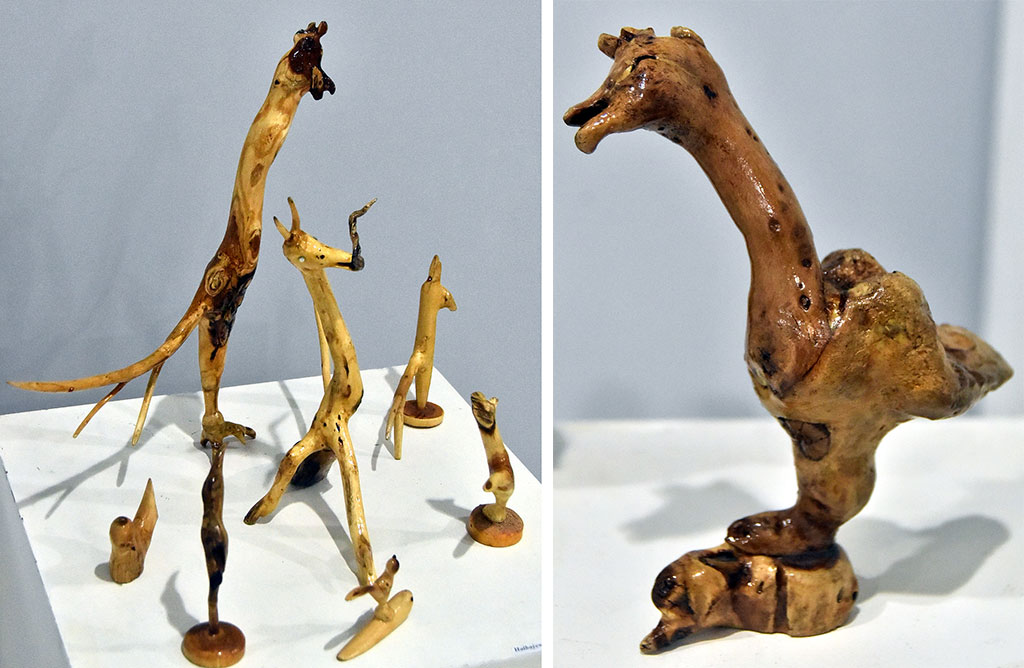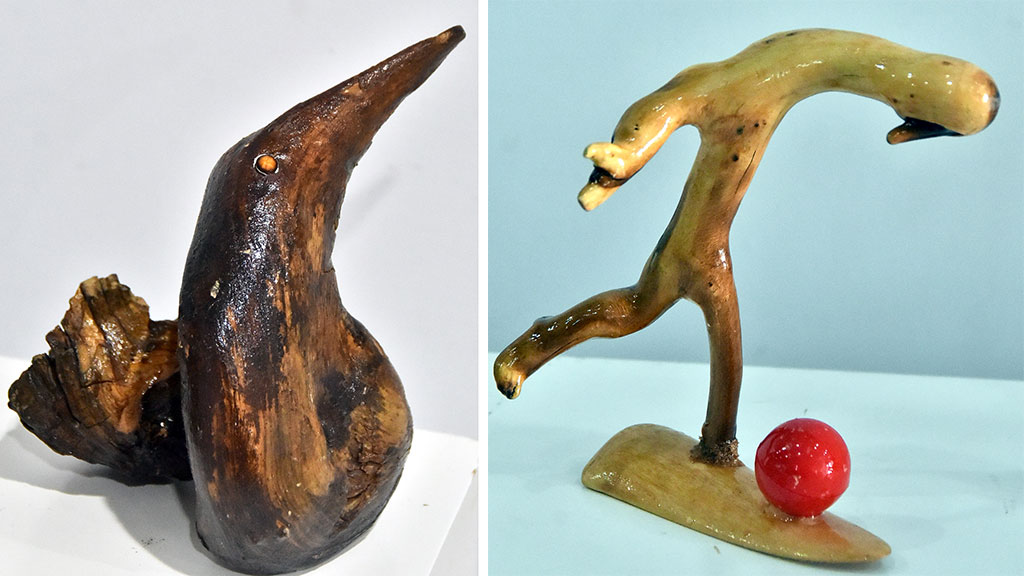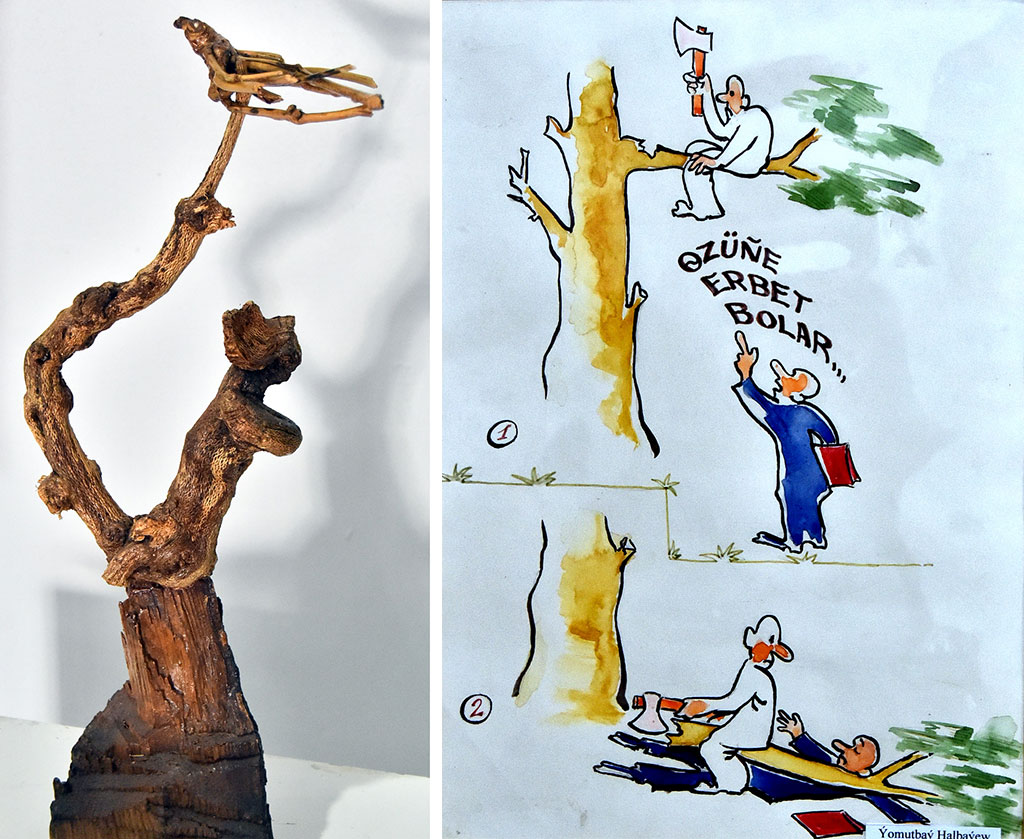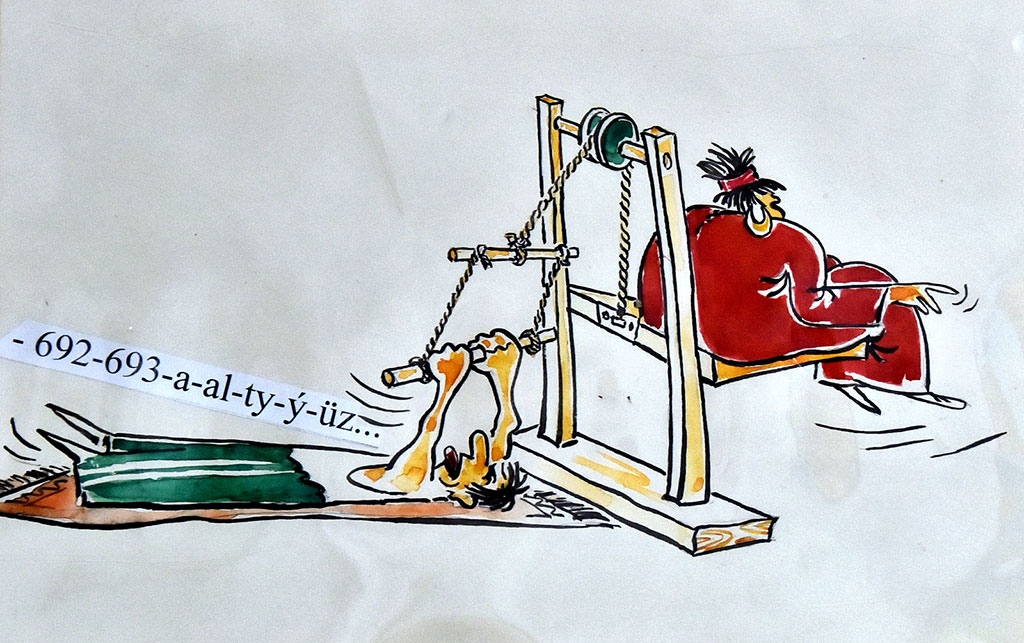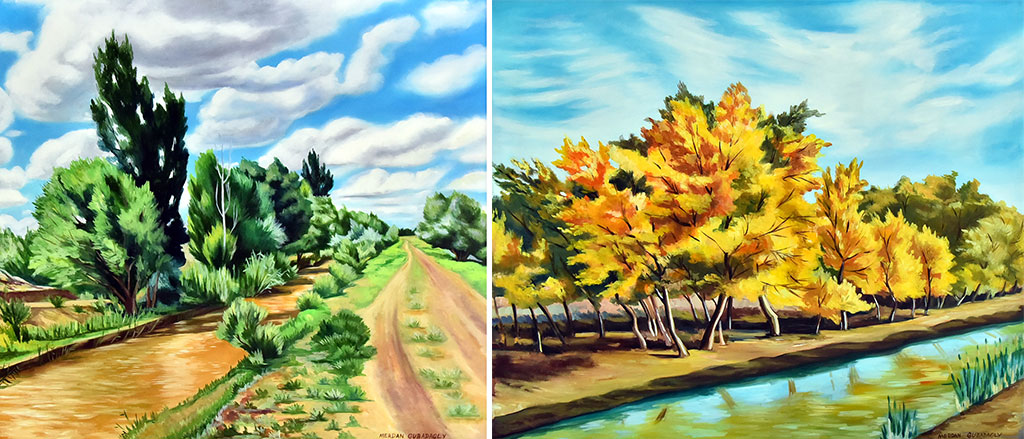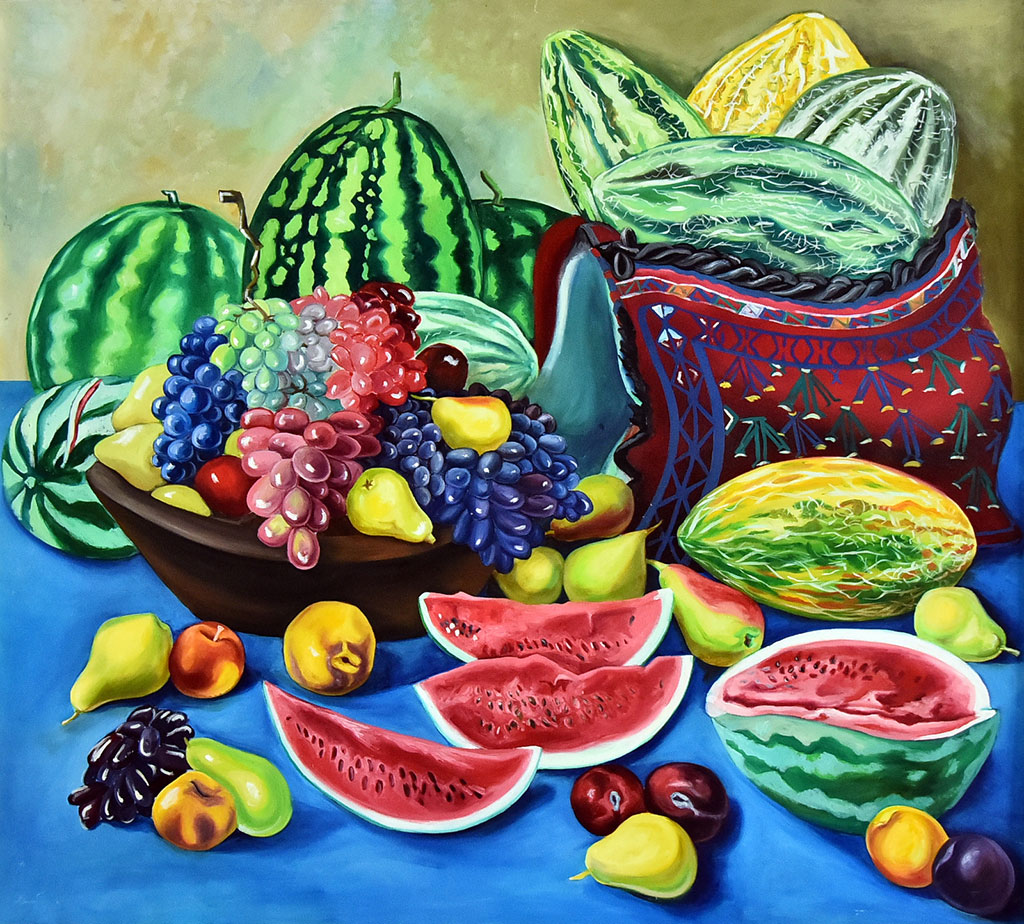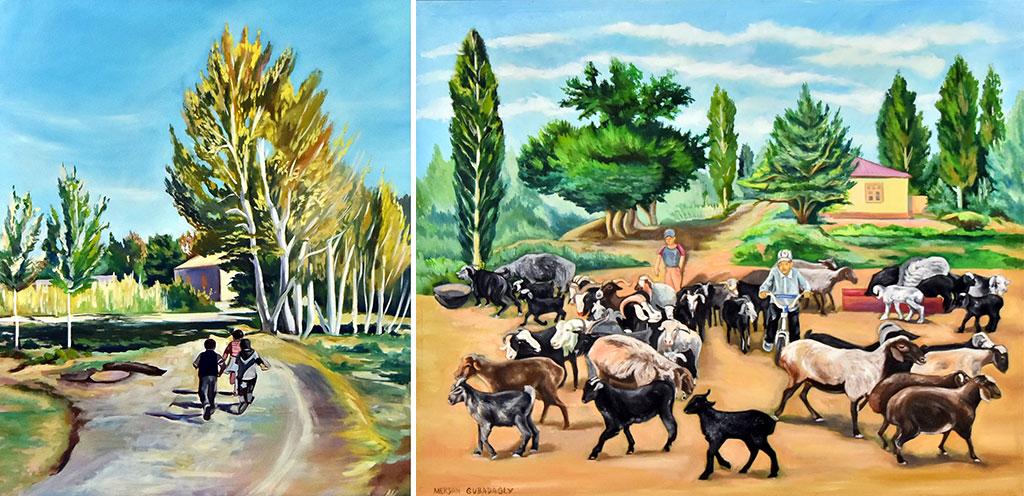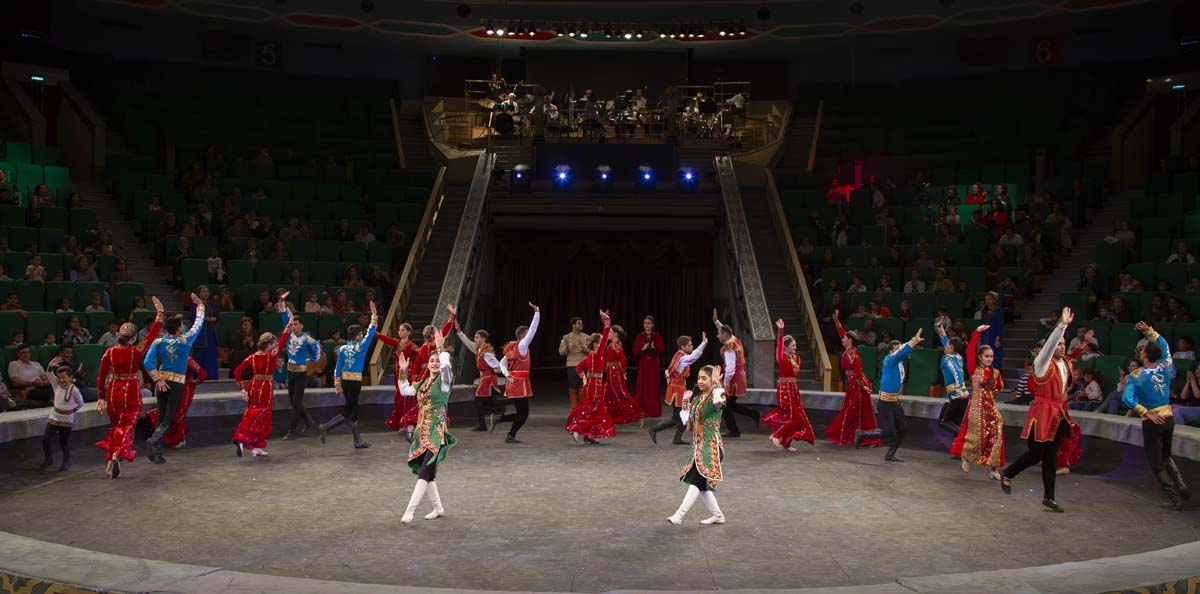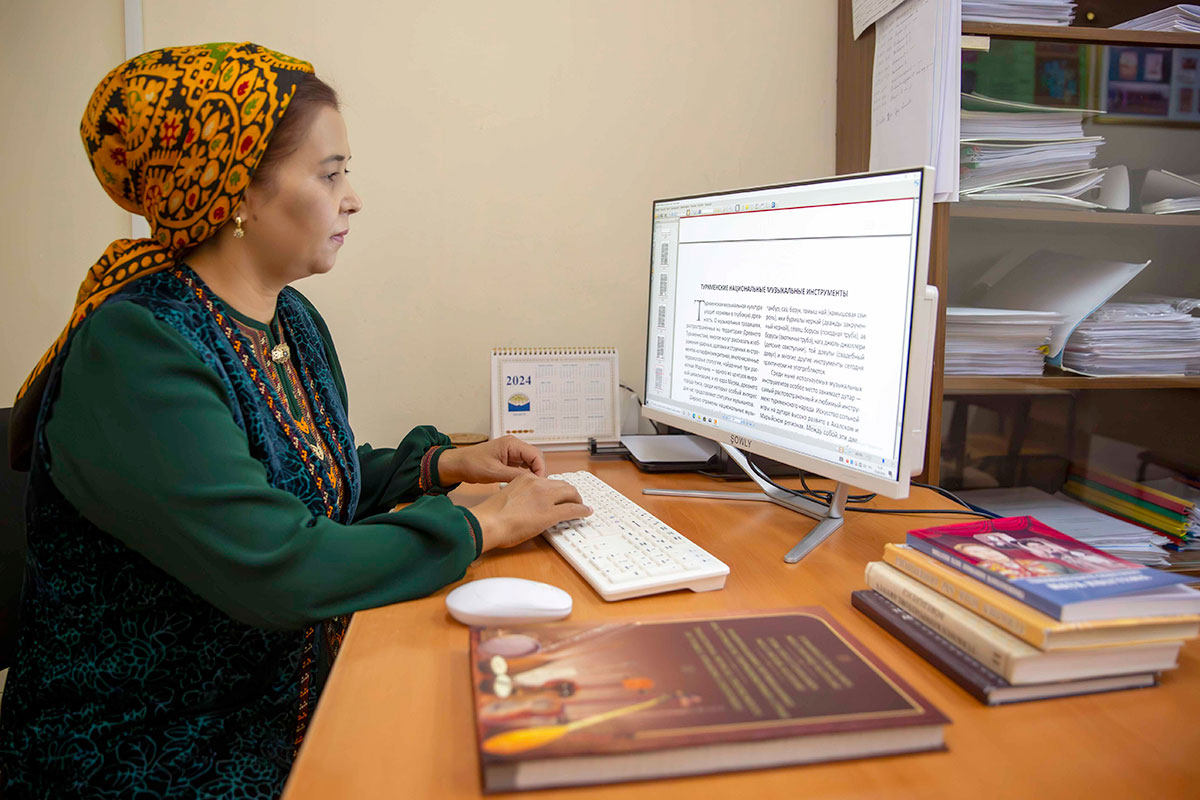It has been a year and a half since Yumudbay abandoned his easel and brush to get absorbed in handicraft. When the artist sees unusually-shaped roots or branches of shrubs in the steppe, he conjures up images of different characters. He picks them up, then cleans, treats, sands and applies protective varnish over the whole surface, and they turn into either easily recognized or unknown fantastic beasts.
Who could ever think that this small coiled snake is a root of the camel thorn (yandak in Turkmen)? Yumudbay Khalbaev also likes to work with roots of the tamarisk, another plant that grows in the desert. Its roots turn into excellent monitor lizards, crocodiles, and other fairy-tale monsters. The artist makes good use of charred wood, as well. By the way, a piece of charred wood was made into a cute imp. The artist’s twelve-year-old grandson, Serdar, who shares his grandfather’s passion, helps him to look for roots and branches of odd shape. Accompanying his grandfather, he proudly watched the visitors take a keen interest in the original collection.
The creative artist presents 100-plus exhibits: a hare, dragon, pithecanthropus, fox, frog, dog, scores of small and big birds. Each visitor feels like taking them in their hands to have a closer look and to get positive energy from the wooden crafts. A sign that reads ‘Please, do not touch the exhibits!’ would be of no use here. A ‘Handle with great care’ sign would be more suitable.
Among those attending the exhibition are Yumudbay’s friends and his former fellow students from the art school.
- He was a favorite student of mine, Kakajan Ashirov says, - because even in his student days his diligence and special view of the world around set him apart. Apparently, this is why he actively collaborated with the satirical magazine ‘Tokmak’.
One of the exhibition’s section features Yumudbay Kakabaev’s comic drawings that irresistibly draw the visitors making them smile cheerfully. For instance, one of the drawings shows a fisherman, selling fish to a line of people straight from his fishing rod. The artist’s other drawing depicts a cartoon character standing under a tree and warning a man in the tree: “Do not saw off the branch you are sitting on”. Suddenly, the branch falls down and strikes the onlooker.
... Stunningly beautiful landscape paintings open the section devoted to Merdan Kakabaev’s work. Two of them portray vibrant autumn colors with a golden glow, the other one evokes memories of the spring: with emerald green and sparkling trees, and a lace of snow-white clouds floating across the azure blue sky. Merdan’s signature style of painting – broad brush-strokes with glazing – makes his works particularly expressive.
The exhibition boasts an impressive array of vivid still-life paintings showing a ripe juicy watermelon.
-Although our land is famous for top-quality grape varieties, there’s nothing I like more than watermelons, the artist confesses. - Have a look at this unusual winter still-life painting that depicts late-maturing melons and watermelon varieties.
Slices of the watermelon are indeed not crimson red, but whitish purple. The choice of fruits is also different: pomegranates, quinces, Garygyz melon (late-maturing variety) and pumpkins. However, the painting delights with its exquisite hues.
Historical heritage holds an important place in Merdan Kakabaev’s work. The series of his paintings features archeological finds, and ancient and medieval monuments steeped in myths and legends that offer fascinating insights into the past. The artist’s painting ‘Heritage’ shows artifacts unearthed at the sites of Margush and Nisa side by side with the Anau Mosque’s portal.
The artist is particularly keen on old things that went out of use long ago, and are part of museum collections now.
The theme of historical and cultural heritage, which is an integral part of Merdan Kakabaev’s work, touches a responsive chord in the hearts of the visitors, who spend a long time taking a close look at the paintings full of meaning behind the expressive brush-strokes.




